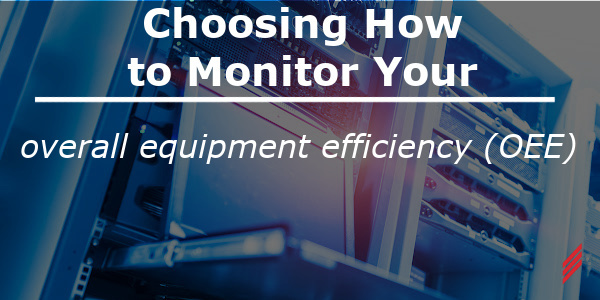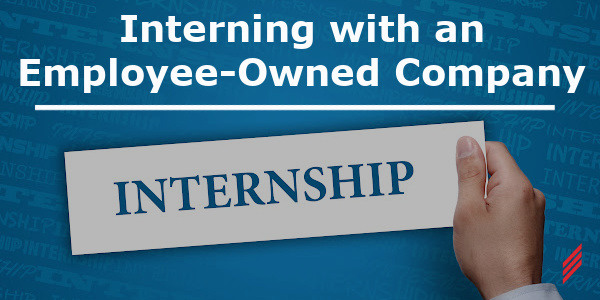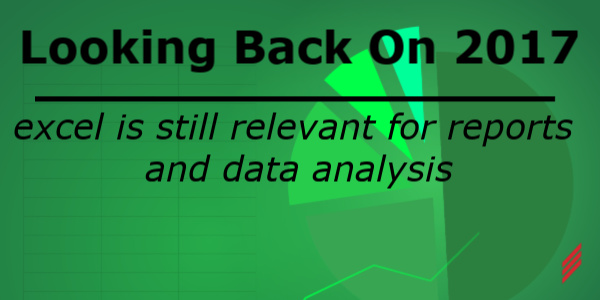Choosing How to Monitor Your Overall Equipment Efficiency (OEE)
by Ralph Folkes on Aug 21, 2025 10:30:00 AM

Struggling with hidden inefficiencies on your production line? Overall Equipment Effectiveness (OEE) is your key to uncovering micro-stops, speed losses, and quality issues—turning scheduled time into saleable product. But choosing the right OEE monitoring system is critical to success. This guide explores why OEE matters, what a reliable system includes, and three implementation paths to match your facility’s needs.
Why Reliable OEE Still Matters
OEE (Availability × Performance × Quality) remains the fastest shorthand for how effectively a line turns scheduled time into saleable product. When the data are captured automatically and given the right context, the metric becomes a daily coaching tool—providing real-time insights to:
- Identify brief halts (micro-stops) eroding uptime.
- Pinpoint recipes causing chronic speed losses.
- Quantify quality defects with hard numbers.
What an Effective OEE System Includes
At its core, a reliable OEE monitoring system consists of precise data captured from your production lines, secure and structured storage in a database, clear and actionable calculations to determine availability, performance, and quality, and intuitive dashboards that communicate the results in real-time. Whether hosted on-site or in the cloud, the system must seamlessly integrate with your existing hardware and software—ranging from PLCs and SCADA systems to ERP and CMMS platforms—to provide timely insights that drive meaningful improvements.
Choosing the Right Solution Matters
Selecting the appropriate OEE monitoring path for your facility is crucial because the effectiveness of your manufacturing optimization efforts heavily depends on the alignment between your system capabilities and your operational realities. An ill-fitting solution can result in hidden inefficiencies, inaccurate data interpretations, high ongoing costs, or increased operational risks. The right system matches your facility's technological maturity, in-house capabilities, data governance policies, budgetary constraints, and long-term strategic goals.
Three Implementation Paths
When selecting an OEE system, facilities typically consider three primary implementation paths—partnering with a controls engineering integrator, choosing a packaged MES or SaaS solution, or developing the system in-house. Each approach has unique advantages and challenges that align differently with organizational priorities, technical capabilities, budget constraints, and long-term growth plans. Understanding these distinct paths helps ensure your chosen solution effectively supports your operational goals.
Controls Engineering Partner
Partnering with a system integrator offers a custom solution tailored to your plant.
Why Choose:
- Sensor‑to‑CEO domain expertise – same team wires the PLC, writes the overlap CTE, and builds the dashboard.
- Tailored taxonomy & workflows – reason codes, shift logic, and quality checks mirror your SOPs.
- Vendor‑neutral stack – reuse existing Ignition/Kepware/SQL/Cloud investments; avoid lock‑in.
- Single‑point accountability – dedicated PM + 24 ⁄ 7 support beats juggling multiple vendors.
- Scalable roadmap – design once, roll out pilot → plant‑wide → multi‑site without re‑platforming.
- Knowledge transfer – documented standards, source‑controlled code, and training packages reduce the “Joe‑retired” risk.
- Data‑governance ownership stays with you — you keep all your data in house and have full control.
Watch Outs:
- Higher up‑front cost & effort — compared with plug‑and‑play SaaS you pay more in discovery, project management, and commissioning before the first dashboard appears.
- Heavy SME involvement required — your process experts must define loss taxonomy, shift logic, and “golden‑run” thresholds or the integrator will build the wrong rules.
- Ongoing change‑order exposure — enhancements and 24 / 7 support often sit outside the original scope, so budgets can drift if retainers aren’t negotiated early.
- Partner‑quality dependency — a weak integrator can turn “custom” into “custom headache,” leaving you with brittle code and sparse documentation.
- Data‑governance Security — you enact corporate standards (retention, encryption, access) or risk management.
Packaged MES/SaaS Solution
Manufacturing Execution Systems (MES) or Software-as-a-Service (SaaS) offer rapid deployment.
Why Choose:
- Days to value – pre‑configured models and dashboards; many vendors quote “first shift live in a week.”
- Built‑in best practices & compliance – algorithms validated across hundreds of sites → auditor friendly.
- Predictable OpEx – subscription model eases multi‑site cost forecasting.
- Lower internal maintenance – cloud hosting, auto‑patching, and SLAs keep IT workload light.
- Road‑tested integrations – mature connectors to popular ERP/CMMS platforms.
Watch Outs:
- License creep – per‑asset or per‑user pricing can balloon as footprint grows.
- Process‑fit gaps – you adapt to their data model; custom workflows may need costly “mod‑pro” work.
- Data‑silo & lock‑in risk – if raw events live only in the vendor cloud, analytics flexibility drops.
- Update cadence outside your control – vendor pushes features on their timeline, not yours.
- Limited tech stack choice – switching PLC/SCADA platforms may demand new connectors or fees.
- Data‑governance – Provider goes out of business or security failure by provider could result in loss of your data or the public access of your data outside of your control
Build In-House
Developing your own OEE system gives full control but demands resources.
Why Choose:
- Full IP ownership – no black‑box algorithms; math lives in your Git repo.
- Zero recurring license fees – only pay cloud or hardware you already need.
- Rapid tweak loop – dev team can pivot dashboards or logic overnight without PO cycles.
- Upskilled workforce – internal talent learns SQL, Python, Ignition, Power BI, etc.
- Culture alignment – solution evolves hand‑in‑hand with your continuous‑improvement playbook.
- Data‑governance ownership stays with you — you keep all your data in house and have full control.
Watch Outs:
- Key‑person risk – one dev’s exit can cripple support if knowledge isn’t documented.
- Competing priorities – plant projects often lose resources to corporate IT “fire drills.”
- Long‑term staffing cost – sustaining a niche analytics platform may not pencil out vs. outsourcing.
- Re‑inventing basics – DIY teams can burn months rediscovering loss trees or schedule edge‑cases others solved years ago.
- Audit & validation burden – regulated industries must prove home‑grown calculations are sound.
- Data‑governance security — you enact corporate standards (retention, encryption, access) or risk management.
Common Pitfalls to Avoid
Even the best OEE system can fail if you overlook these issues:
- Inaccurate Data Capture: Ignoring shift boundaries or downtime reasons inflates OEE.
- Missing Micro-Stops: Sub-60-second halts erode OEE if not tracked.
- Time Zone Issues: Mismatched clocks (e.g., SCADA vs. ERP) cause data gaps.
- Poor Counter Logic: Resets at midnight create false performance drops.
- Master Data Gaps: New SKUs not in loss taxonomy tag downtime as “Unknown.”
- Operator Burden: Complex reason pickers lead to garbage data.
- Change Management: PLC updates can break dashboards without automated tests.
- Rigid Middleware: Hard-coded IDs fail when shifts or lines change.
- Data Latency: Delayed historian backfills create “ghost” losses.
- Alert Overload: Too many emails desensitize users to real issues.
- KPI Overload: Too many metrics (OEE, TEEP, MTBF) confuse operators.
- Security Risks: Unpatched SCADA opens ransomware threats.
- Scaling Costs: Data storage needs grow faster than expected.
- Quality Delays: Late lab results skew OEE’s Quality metric.
Take Control of Your OEE Today
Choosing the right OEE monitoring system is more than a technical decision—it’s a strategic move to boost efficiency, reduce losses, and empower your team. Whether you partner with an integrator, opt for a SaaS solution, or build in-house, align your choice with your plant’s needs and goals. Start by assessing your current OEE tracking—small changes today can unlock big wins tomorrow.
About the Author
Ralph is a Senior Controls Engineer working out of our Austin, TX office. He joined Hallam-ICS in Feb 2023 and prior to that worked in the Water and Wastewater, Oil and Gas, and Semiconductor industries.
Read My Hallam Story
About Hallam-ICS
Hallam-ICS is an engineering and automation company that designs MEP systems for facilities and plants, engineers control and automation solutions, and ensures safety and regulatory compliance through arc flash studies, commissioning, and validation. Our offices are located in Massachusetts, Connecticut, New York, Vermont, North Carolina, Texas and Florida and our projects take us world-wide.
You May Also Like
These Related Stories

Interning with an Employee-Owned Company

LEED v4, ASHRAE Guideline 36 and other MEP Engineering trends for 2017




No Comments Yet
Let us know what you think